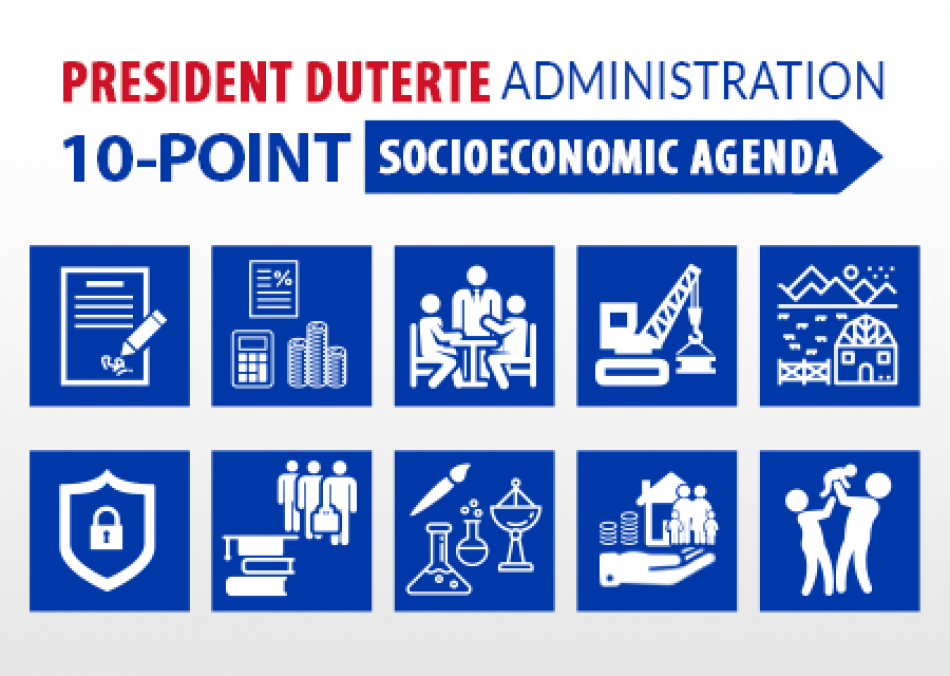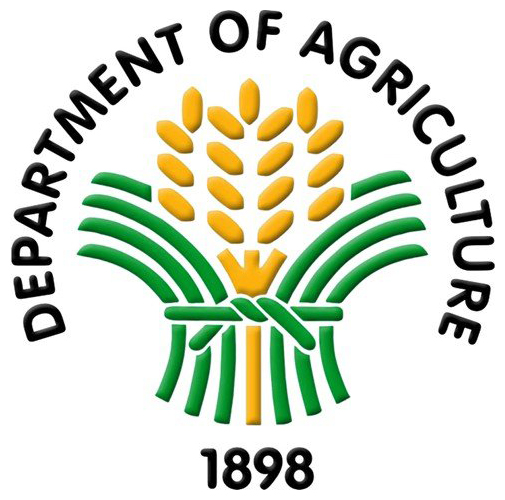
MANILA, Jan. 4 (PIA)- The New Year brings renewed hope and vigor for Filipinos. With the 2017 National Budget in place, the government and its agencies are all set to take the country to its journey towards real change.
The 2017 National Budget – the People’s Budget – was crafted parallel to the Duterte Administration’s 10-Point Socioeconomic Agenda. It concentrates on strong, sustained, and inclusive growth. Development will not be focused on already wealthy regions, cities, and few rich alone, but will also embrace lagging regions, poor towns, and the poor majority.
The major constraints to growth are poor infrastructure, the high cost of doing business due to poor governance, and the uncompetitive and inefficient tax system. The Duterte administrations will address these constraints.
But in order to make growth to be truly inclusive, it will aspire to create as many decent jobs as possible. Hence, the government will fully invest in the country’s most significant asset – its people, especially the youth– to ensure that they become an agile, competent, and healthy workforce in the future.
The 2017 National Budget was crafted in order to make the Philippines an attractive economy for both domestic and foreign investors, and more important, to provide higher incomes, decent jobs, and better standards of living for Filipinos.
Spending Priorities: (1) Infrastructure
Total infrastructure spending will exceed P850 billion for 2017 or 5.4% of gross national product (GDP). The huge allocation will secure for us improved roads, bridges, transportation systems, school buildings, health facilities, and other infrastructure assets. The bul of infrastructure financing will go to the Department of Public Works and Highways (DPWH) and the Department of Transportation (DOTr) with allocations of P454.7 billion and P46.2 billion, respectively.
The DPWH is set to spend P216.9 billion for road network services, allowing for the construction, maintenance, and rehabilitation of national roads to ease traffic congestion and improve commerce. An additional 3,102 kilometers of national roads and 26,786 kilometers of bridges will better integrate markets and link lagging regions to leading regions. The Mindanao Logistics Infrastructure Network (MLIN), with a P31.5 billion allocation for 2017, is a testament to this.
Flood management services are provided P73 billion to construct and maintain 2,055 flood control structures and drainage systems.
Project monitoring will be strengthened by geo-tagging major projects to eliminate “ghost projects” and ensure timely execution.
Table 1: DPWH Budget
| Total DPWH Budget | P454.7 billion |
| National Road Network Services | P216.9 billion |
| Flood Management Services | P73 billion |
Meanwhile, the DOTr will utilize its allocation to finance various transport initiatives. The Light Rail Transit Authority (LRTA) projects are given P6.8 billion for the LRT lines 1 and 2 extension projects. In total, railway systems are allocated P16.3 billion; airports and navigationa facilities are allocated P6.8 billion; port systems are given P1.4 billion.
Table 2: Department of Transportation (DOTr) Budget
| Total DOTr Budget | P46.2 billion |
| Railway Systems | P16.3 |
| Airports and Navigation Facilities | P6.8 billion |
| Port Systems | P1.4 billion |
Spending Priorities: Investment in Human Resources
In line with the Administration’s goal of developing our most important asset – our people – education, health, and school welfare will be given top priority.
Forty percent of government expenditures will finance social services, ranging from education, healthcare, and housing to social protection, land distribution and employment. This means that more than P1.3 trillion will be spent for programs that will provide safety nets to Filipinos and equip them with the necessary tools to be productive members of society.
For 2017, the Department of Education (DepEd) will receive the highest budgetary allocation among all agencies with P543.2 billion. This amount will fund the government’s objectives of universal basic education for Filipinos. It will also raise the quality of learning received by Filipinos, especially with the full implementation of the K-12 Program. With the increased demands on the basic education system, P55.1 billion is allotted for the creation and filling up of teaching and non-teaching positions.
State Universities and Colleges (SUCs) will receive P58.7 billion to allow deserving but poor students access to tertiary education. This is on top of the Commission on Higher Education (CHED) allocation of P18.7 billion that will grant financial assistance, incentives and scholarships to qualified Filipinos. Technical Education and Skills Development Authority (TESDA) will get P6.7 billion in order to develop workforce competencies and promote technical-vocational education.
Table 3: Education Funding
| Department of Education | P543.2 billion |
| State Universities and Colleges | P58.7 billion |
| Commission on Higher Education | P18.7 billion |
| Technical Education and Skills Development Authority | P6.7 billion |
The government will invest heavily in basic health care. The DOH will be given P95.3 billion for wider access to safe and effective health service. Indigent patients will be prioritized as P4.0 billion is set aside for financial assistance to poor beneficiaries. P18.0 billion is also earmarked for the purchase and allocation of drugs, medicines and vaccines for distribution to government healthcare facilities, particularly provinces with high levels of poverty incidence.
In addition, the Philippine Health Insurance Corporation (PhilHealth) will receive P53.2 billion for social health insurance services, with the aim of 100 percent coverage to all Filipinos
Table 4: Healthcare Funding
| Department of Health | P95.3 billion |
| Philippine Health Insurance Corporation | P53.2 billion |
The Health Facilities Enhancement Program under the Department of Health is set to spend P12.7 billion on infrastructure programs involving barangay health stations, rural health units, public hospitals, and drug rehabilitation and treatment facilities. On the other hand, the Department of Education will spend P118.8 billion on basic education facilities such as public school buildings, technical vocational laboratories, and sanitation units. (How many school buildings will be built?)
Table 5: Major Human Capital Infrastructure
| Basic Education Facilities (DepEd) | P118.8 billion |
| Health Facilities Enhancement Program (DOH) | P12.7 billion |
Social protection that empowers the poor and shields them from shocks is allocated P128.1 billion through the DSWD. The Conditional Cash Transfer Program is allotted P78.2 billion to support poverty reduction efforts while increasing human capital investments for beneficiaries. This year, a monthly rice allowance has been added on top of the cash grants.
Next, P17.9 billion is allocated as social pension for indigent senior citizens, allowing them a monthly stipend of P500. KALAHI-CIDDS, an anti-poverty community-driven development program is given P10.2 billion. The Sustainable Livelihood Program is also given P9.1 billion to aid Filipinos in micro-enterprise development and employment facilitation. Finally, the Supplemental Feeding Program is given P4.4 billion to nourish eligible day-care children.
Table 6: Social Protection Services
| Total DSWD Budget: | P128.1 billion |
| Conditional Cash Transfer Program | P78.2 billion |
| Social Pension for Indigent Senior Citizens | P17.9 billion |
| KALAHI-CIDDS | P10.2 billion |
| Sustainable Livelihood Program | P9.1 billion |
| Supplemental Feeding Program | P4.4 billion |
The focus on human capital development will enable our young men and women to develop into an agile, productive, and competent workforce that will boost economic growth in the future.
The People’s Budget: Pro-Poor and Pro-Growth
The 2017 National Budget is anchored on inclusivity. It will facilitate growth in the Philippines, already one of the fastest growing emerging economies in Asia, and unlock the potential of key industries throughout the archipelago. Combined with policies that lower the cost of doing business, such as the tax reform package, and peace and order efforts to ensure safer communities, the 2017 Budget will spur development that will concretely translate to superior quality of life for all Filipinos. (DBM)







